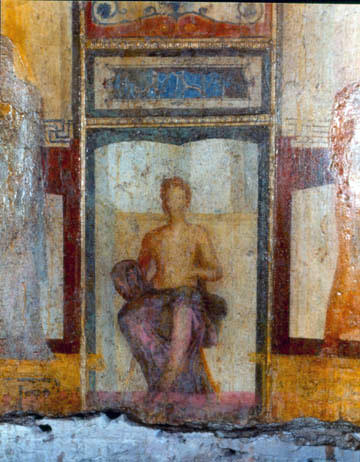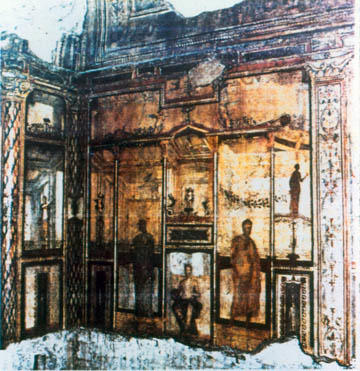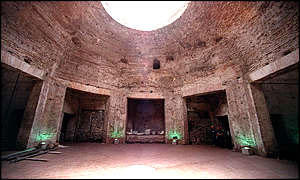Domus Aurea
1996 World Monuments Watch
Discovered around 1480, the Domus Aurea—Nero's famed Golden Palace—was the major source of information on ancient Roman painting and decoration for Renaissance artists. Although much of the building had been lost by the time it was included on the 1996 World Monuments Watch, the 10,000 square feet of rooms occupied by the emperor himself remained largely intact, serving as the substructure of the Baths of Trajan. Salt crystallization, calcium deposits, pollutant crusts, and biological growth obscured the beauty of the decorations and threatened their survival. Loss of the frescoes was an immediate threat because the rate of deterioration was unknown. A detailed analytical study of the frescoes and stuccoes in all the rooms of the palace was urgently needed in order to develop an appropriate conservation strategy.
Since the Watch
In June 1999, 32 of the palace’s 150 remaining rooms were opened to the public after a two-decade-long restoration project. Areas of frescoes were cleaned of thick salt deposits, and measures were implemented to control threats from the environment. Nevertheless, in the years that followed the Domus Aurea continued to be plagued by major problems. The site was closed to the public in 2001 due to concerns about its structural stability, and after its reopening it was closed again in 2005 and 2008. In March 2010, a large part of a vault above one of the galleries collapsed following a period of heavy rainfall. The site’s fortune began to turn when an appeal was made for its restoration in 2012. The project is currently ongoing, and since October 2014 visitors have been allowed access to the site on guided weekend tours. In January 2016, €13 million were allocated to the conservation work from the Italian government. The restoration is set to be completed in 2018.



